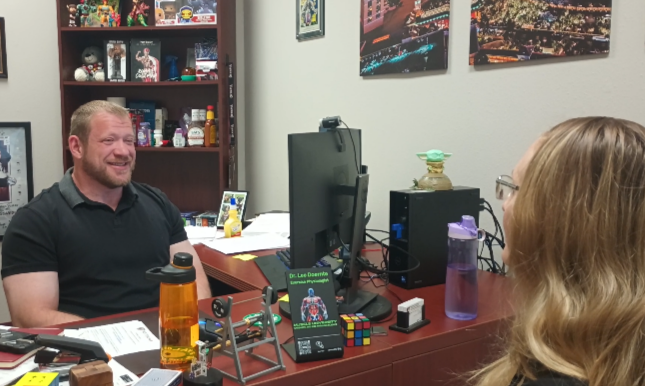“Training WORKS, Melissa!”
I had read these words in her book, but now, Kathrine Switzer was emphatically saying them. To me. And she should know. In an era when it was thought that women would grow facial hair, succumb to “frozen bicycle face,” become barren, or maybe even die if they tried to run anything longer than 800 meters, she ran a whole 26.2 miles. The first marathon she ran, Boston, took her over 4 hours. In a few years of smart training, she won the New York City Marathon with a sub-3 hour time – world class to be sure. Training works.
What does this mean for our three movement seekers?
This is great news for athletes at all levels. Your body will respond, to a point, to any stimulus you give it. Younger athletes and newer athletes will generally see more gains when a new stimulus is applied than more experienced athletes.
Recreational athletes are mostly concerned with staying active and having a social outlet. Since these individuals are usually not engaged in regular or structured practice, they may not see any long-term training gains. Their activity patterns would not be considered “training” since they are varied and spontaneous. The recreational players may find that they are sore after games or bouts of exercise, but they generally experience the same levels and kinds of soreness every time they play because they do not engage in the movements often enough to create lasting change.
On that note, the “Training WORKS!” Principle applies in both directions – both to increasing and decreasing fitness. Not-training also works (to de-train you), unfortunately. When a person does something active, one of three things can happen:
1. Their next activity of the same nature happens too soon and fitness declines or stays the same.
2. Their next activity of the same nature happens too late and fitness has declined or stays the same.
3. Their next activity of the same nature happens at just the right time and fitness increases.
The recreational participant waits too long between bouts of exercise, so the fitness level returns to previous levels or declines before the next bout of exercise happens. In the grand scheme of things, fitness does not improve. However, if the primary goal is social engagement, they probably succeeded!
Lastly, consider the physical education student. The student seeks to learn more about healthy lifestyle and put this knowledge into practice. This involves learning how to improve the body’s fitness to life-long sustainable levels. While the overall level of fitness need not be as high as that of the athlete, this person still needs to incorporate moderate levels of regular training to maintain life-style fitness.
Good news for the parents: You do not have to spend 20 hours a week shuttling your kids to multiple sports to keep them healthy or to get them into college. In fact, there is so much evidence that you should not. It’s about working smarter not harder to achieve athletic excellence. We can all take a big sigh of relief because we are no longer beholden to the myths that are keeping our families in the fast-food drive throughs nightly, separated on the weekends, spread thin on our budgets, and generally distracted from God’s true purpose for us. Let that soak in for a minute.
That is good news.
But if you have been living that lifestyle, it is reasonable for you to feel uncertain of letting go of that perceived safety net. Maybe, like me, you were told from before your child could walk that they would need to do sports early and do lots of them to make it into college. I remember the panic I felt on hearing this pronouncement for the first time, but I am here to tell you that those statements are simply not true. I will expand on this idea over the course of the season.
Let me leave you with this: according to one recent study of homeschooled athletes in Houston (probably some of those fabulous Houston athletes we compete against at the state level), an increased number of hours spent in homeschool sport practice had no effect on a child’s ability to complete basic fitness indicators. What does this mean? I will tell you in an upcoming post.
As always, if you want to chat about the “Training WORKS!” Principle or anything else on your mind, contact me! Also, if you haven’t heard what Dr. Doernte has to say about smart training, be sure to tune into that video!
~Coach Melissa
Kabiri, L. S., Rodriguez, A. X., Perkins-Ball, A. M., & Diep, C. S. (2019). Organized sports and physical activities as sole influencers of fitness: The homeschool population. J Funct Morphol Kinesiol, 4(1), 13-20. https://doi.org/10.3390/jfmk4010013
Gambetta, V. (2015). Training Design. In Will Freedman (Ed.) Track & Field Coaching Essentials. (pp. 48-59). USATF Human Kinetics.


